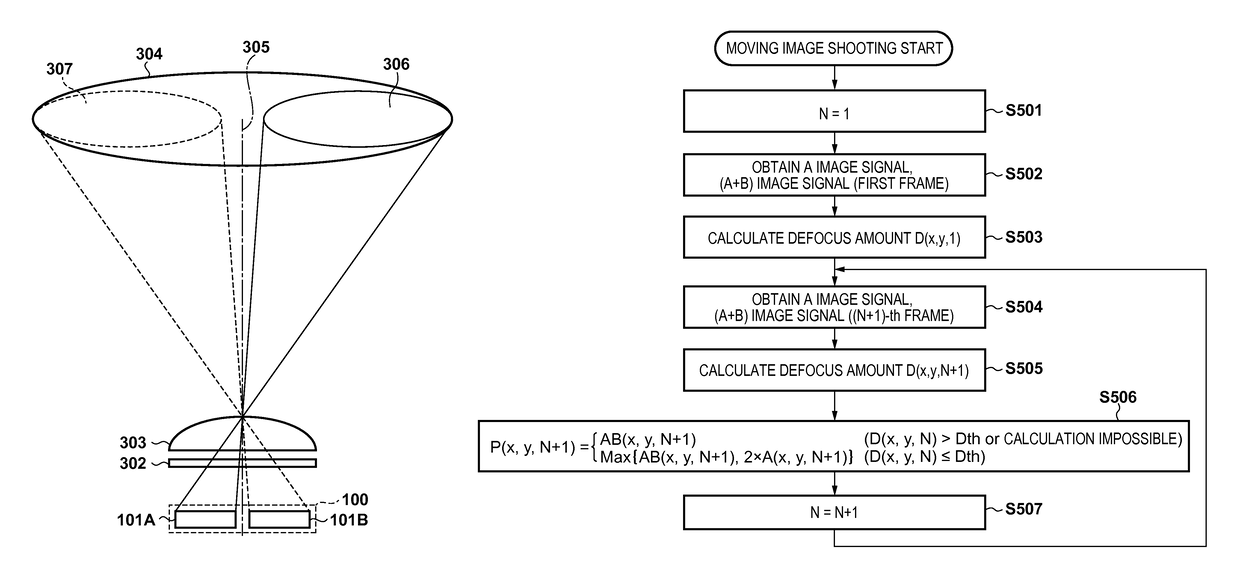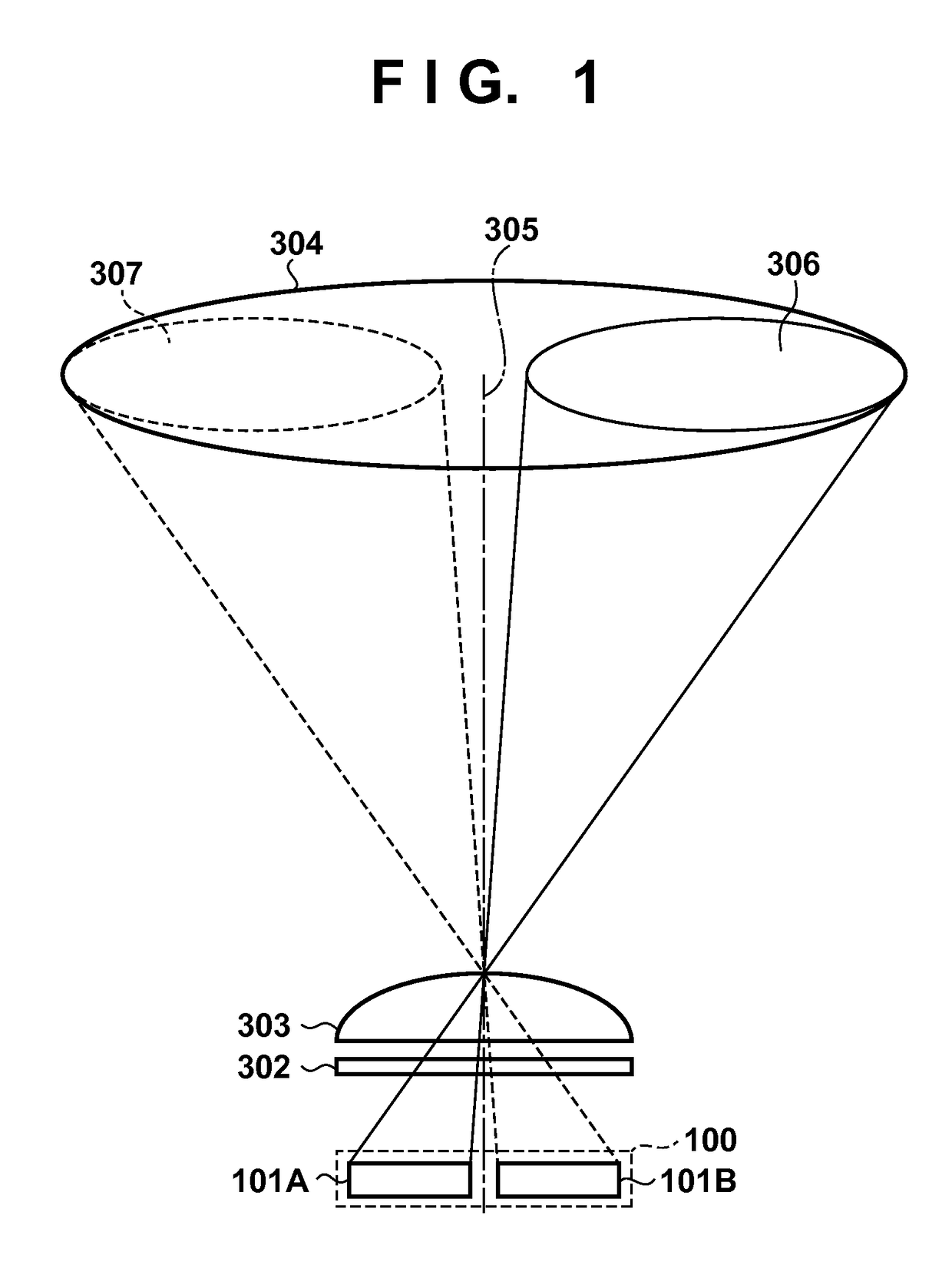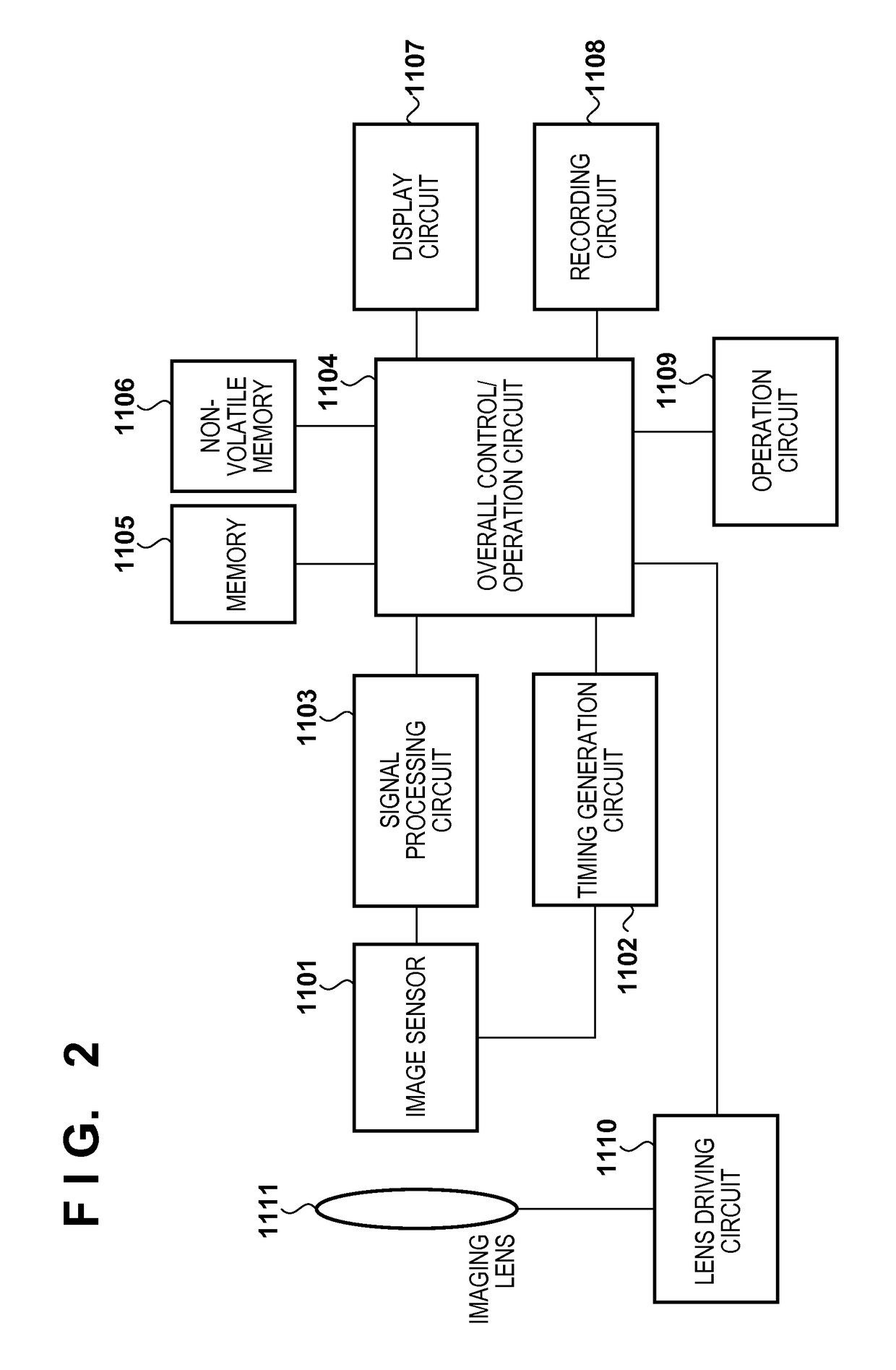Image capturing apparatus and method of controlling image capturing apparatus
a technology of image capturing apparatus and image capturing apparatus, which is applied in the direction of color television details, television system details, television systems, etc., can solve the problems of increasing power consumption during readout, affecting image quality, and deteriorating image quality, so as to achieve the effect of suppressing deterioration in image quality and increasing power consumption
- Summary
- Abstract
- Description
- Claims
- Application Information
AI Technical Summary
Benefits of technology
Problems solved by technology
Method used
Image
Examples
first embodiment
[0021]First, the principles by which a phase difference detection method type of focus detection is realized in a normal image sensor for capturing a subject image will be described. FIG. 1 is a diagram that schematically shows a situation in which luminous flux that has exited from an exit pupil of an imaging lens is incident on one unit pixel of the image sensor. A unit pixel 100 has a first photodiode (PD) 101A and a second photodiode (PD) 101B, and is covered by a color filter 302 and a microlens 303.
[0022]The center of an exit pupil 304 of the imaging lens is an optical axis 305 with regards to a pixel that has the microlens 303. Light that has passed through the exit pupil 304 enters the unit pixels 100 with the optical axis 305 as the center. Also, as shown in FIG. 1, luminous flux that passes through a pupil region 306, which is a portion of the region of the exit pupil 304 of the imaging lens, is received by the first PD 101A through the microlens 303. Similarly, luminous f...
second embodiment
[0045]Next, an image formation method in a second embodiment of the present invention will be described using the flowchart in FIG. 7. A difference from the first embodiment is the point that the operation for replacing the final image signal with a doubled A image signal in step S506 is performed on only G pixels in the second embodiment. Normally, the image sensor 1101 is matched to the human relative luminosity factor, and thus in the case in which the image sensor 1101 is covered with the primary color filter 302, the sensitivity of the G pixel is the highest. For this reason, when obtaining the arithmetic average, only the G pixels where loss of dynamic range is likely to occur are replaced. Note that the same step numbers have been allocated to processes in FIG. 7 that are similar to FIG. 5.
[0046]When an instruction is made to start moving image shooting, the number of frames N is reset to one in step S501. Next, in step S502 the A image signal and the (A+B) image signal in th...
third embodiment
[0050]Next, the third embodiment of the present invention will be described. In the third embodiment, instead of the operation performed in step S506 of the first embodiment in which the final image signal is replaced with a doubled (a multiple of) A image signal, an operation in which the final image signal is replaced with the weighted average of the (A+B) image signal and the A image signal is performed, wherein the weighting is continuously changed between frames.
[0051]FIG. 8 is a table of conditions for calculating the final image signal P(x,y,N+1) in step S506 in the third embodiment. The “frame” column shows the state of the defocus amount in each frame with symbols, and the calculating formulas for the image signal P(x,y,N+1) for the corresponding conditions are listed in the right field.
[0052]For example, in the case in which the condition of the third row is that the defocus amount in two consecutive frames from the (N−1)-th frame is Dth or less, the value of P(x,y,N+1) is...
PUM
 Login to View More
Login to View More Abstract
Description
Claims
Application Information
 Login to View More
Login to View More - R&D
- Intellectual Property
- Life Sciences
- Materials
- Tech Scout
- Unparalleled Data Quality
- Higher Quality Content
- 60% Fewer Hallucinations
Browse by: Latest US Patents, China's latest patents, Technical Efficacy Thesaurus, Application Domain, Technology Topic, Popular Technical Reports.
© 2025 PatSnap. All rights reserved.Legal|Privacy policy|Modern Slavery Act Transparency Statement|Sitemap|About US| Contact US: help@patsnap.com



